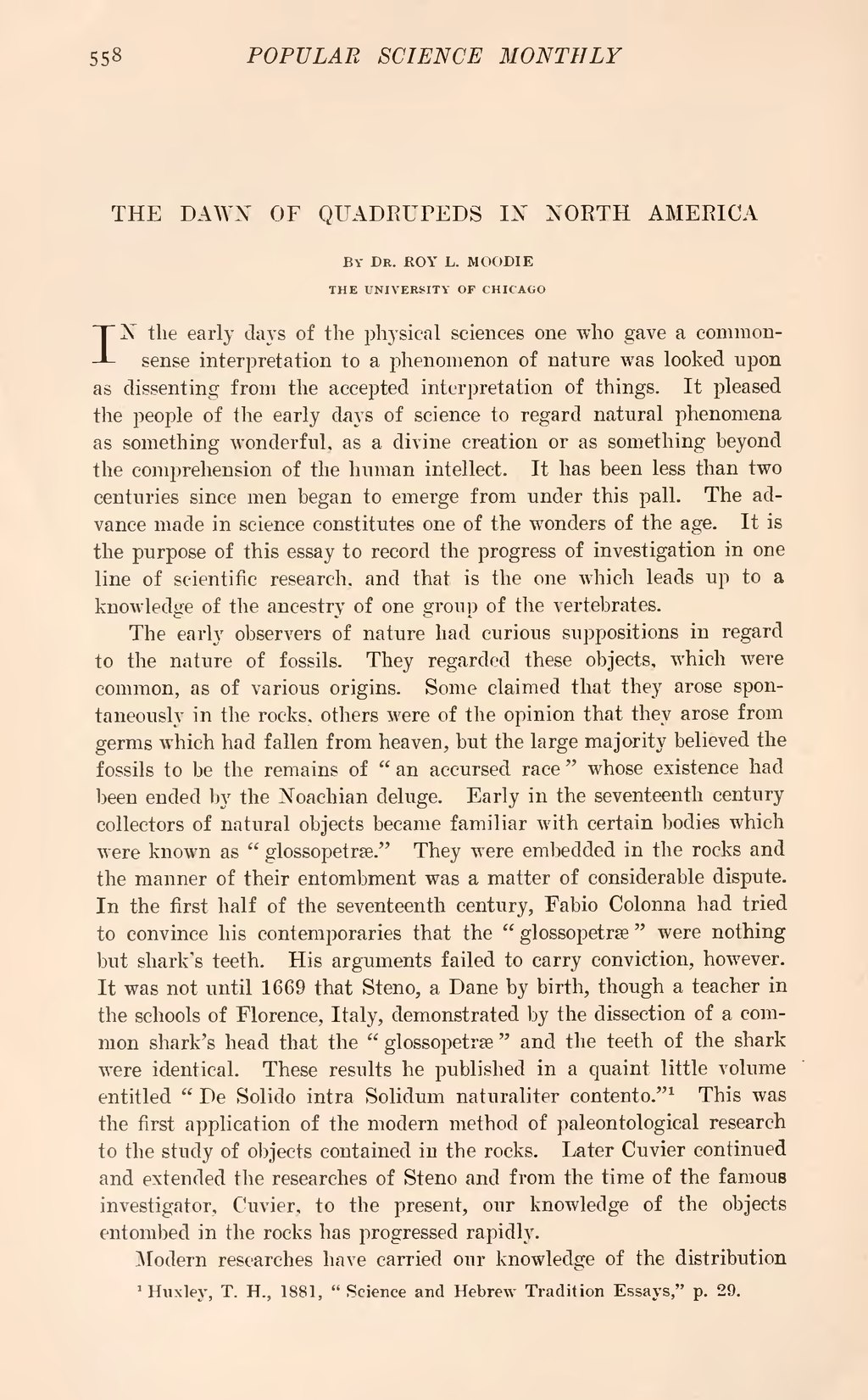| THE DAWN OF QUADRUPEDS IN NORTH AMERICA |
By Dr. ROY L. MOODIE
THE UNIVERSITY OF CHICAGO
IN the early days of the physical sciences one who gave a commonsense interpretation to a phenomenon of nature was looked upon as dissenting from the accepted interpretation of things. It pleased the people of the early days of science to regard natural phenomena as something wonderful, as a divine creation or as something beyond the comprehension of the human intellect. It has been less than two centuries since men began to emerge from under this pall. The advance made in science constitutes one of the wonders of the age. It is the purpose of this essay to record the progress of investigation in one line of scientific research, and that is the one which leads up to a knowledge of the ancestry of one group of the vertebrates.
The early observers of nature had curious suppositions in regard to the nature of fossils. They regarded these objects, which were common, as of various origins. Some claimed that they arose spontaneously in the rocks, others were of the opinion that they arose from germs which had fallen from heaven, but the large majority believed the fossils to be the remains of "an accursed race" whose existence had been ended by the Noachian deluge. Early in the seventeenth century collectors of natural objects became familiar with certain bodies which were known as "glossopetrse." They were embedded in the rocks and the manner of their entombment was a matter of considerable dispute. In the first half of the seventeenth century, Fabio Colonna had tried to convince his contemporaries that the "glossopetræ" were nothing but shark's teeth. His arguments failed to carry conviction, however. It was not until 1669 that Steno, a Dane by birth, though a teacher in the schools of Florence, Italy, demonstrated by the dissection of a common shark's head that the "glossopetræ" and the teeth of the shark were identical. These results he published in a quaint little volume entitled "De Solido intra Solidum naturaliter contento."[1] This was the first application of the modern method of paleontological research to the study of objects contained in the rocks. Later Cuvier continued and extended the researches of Steno and from the time of the famous investigator, Cuvier, to the present, our knowledge of the objects entombed in the rocks has progressed rapidly.
Modern researches have carried our knowledge of the distribution
- ↑ Huxley, T. H., 1881, "Science and Hebrew Tradition Essays," p. 29.
